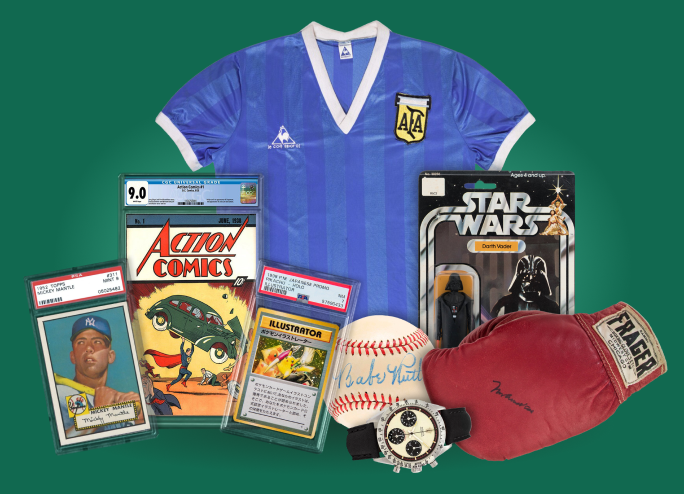Gaming
5
Posts
0
Followers
Gaming
5
Posts
0
Followers
Hey Mantel friends! Just wanted to ask if anyone here partakes in gaming of any sorts?
I myself love to play Old School RuneScape (OSRS), CS2, Valorant, and a few different Battle Royal style titles.
Let's game together!
In
collectorsmd
May 16 2025
Edited
Published May 16, 2025 | By Alyx E, Founder of Collectors MD
Nostalgia is a powerful force. It’s not just a feeling—it’s a trigger. A portal back to simpler times, happier moments, or memories we crave. And in the world of collecting, nostalgia isn’t just a bonus—it’s a business model.
Manufacturers, brands, and platforms have mastered the art of weaponizing nostalgia. They know that for many of us, certain products aren’t just items—they’re time machines. They tap into our most treasured memories, promising a taste of the past, a reminder of a simpler era, or a chance to reconnect with who we were. And they leverage this to drive sales.
Take sneakers, for example—Jordan Retros are a perfect case study. A new release of the Air Jordan 1 “Chicago” can spark a frenzy, not just because it’s a stylish shoe, but because it’s a piece of history—a symbol of Michael Jordan’s dominance, a reminder of the first time you watched him play, or the pair you always wanted as a kid but couldn’t afford. It’s more than just leather and rubber—it’s a portal.
Sports card manufacturers are just as skilled at playing this game. Panini re-releases Donruss & Prizm Deca sets with retro designs, Topps revives its iconic 1986 throwback style, and Pokémon constantly revisits its Base Set with “Celebrations” and “25th Anniversary” editions. Even Magic: The Gathering has a “Secret Lair” series that brings back fan-favorite cards with old-school borders, tapping into the memories of longtime players.
But it doesn’t stop there.
Luxury brands re-release classic handbags, watches, and jewelry—knowing that buyers are drawn to timeless designs. Video game companies remake classic titles—Final Fantasy VII, Resident Evil, The Legend of Zelda: Ocarina of Time—using nostalgia as a selling point. Fashion brands bring back vintage collections, and even soft drink companies revive discontinued flavors just for a limited-time run.
But here’s the thing: nostalgia is a double-edged sword. It can bring genuine joy—reminding us of who we were, what we loved, and what made us feel safe. But it can also be a trap—leading us to spend money we don’t have on items that promise a feeling we can’t quite recapture.
Because that’s the catch with nostalgia: the memory is never exactly as we remember it. The thrill of ripping a pack of 1990 Donruss doesn’t feel the same in 2025 as it did when you were a kid. The “Chicago” Jordan 1s don’t turn you into Mike. The remastered video game doesn’t quite capture the magic of your first play-through.
So how do we protect ourselves from falling too deep into the nostalgia trap?
Ask yourself:
Are you buying this because it truly brings you joy—or because it reminds you of a time when things felt easier?
Are you collecting with intention, curating pieces that genuinely mean something to you—or are you trying to chase a feeling you can’t recreate?
Are you spending responsibly, or are you justifying reckless purchases because they promise a piece of your past?
Nostalgia can be a beautiful thing. It can help us reconnect with memories, bring joy, and provide comfort. But if we’re not careful, it can also become a trigger for compulsive spending, a way of trying to escape the present instead of enjoying it.
There’s nothing wrong with loving the classics. But make sure you’re collecting with clarity, not just chasing a feeling you can’t replay.
#CollectorsMD
Nostalgia should bring you peace, not pressure.
—
Follow us on Instagram: @collectorsmd
Subscribe to our Newsletter & Support Group
Join The Conversation On Mantel
Read More Daily Reflections

Create an account to discover more interesting stories about collectibles, and share your own with other collectors.
In
collectorsmd
May 14 2025
Edited
Published May 13, 2025 | By Alyx E, Founder of Collectors MD
Is gaming just a way to pass the time? Or has it become something else—something with stakes, risks, and consequences we don’t always see? The truth is, modern gaming has transformed into a multi-billion dollar industry driven by addictive mechanics. And in many ways, it looks a lot like gambling.
At its core, gambling is about placing something of value at risk for the chance of a reward. Traditionally, that meant casinos, slot machines, and betting. But in today’s digital world, those mechanics have found a new home—right in the palm of your hand.
Loot Boxes: Digital treasure chests that you pay to open, without knowing what’s inside. It could be a rare skin, a powerful weapon, or just a useless item. The excitement is in the unknown—just like a pull of the slot machine lever.
Microtransactions: Games that lure you in with a low price or a free download but constantly offer you ways to spend money—new skins, power-ups, or “limited-time” offers.
Gacha Mechanics: A popular feature in mobile games where players spend money to receive random characters, items, or rewards—essentially a digital version of a blind pack.
“One More Try” Incentives: Prompts that encourage you to keep playing, keep spending, and keep chasing that next big win.
Flashy skins, limited-time offers, endless content—keep you coming back and spending. But is it just a game?
The most alarming part of this transformation is that it’s not just seasoned gamblers who are being targeted—it’s kids. Bright colors, exciting sounds, and limited-time events pull them in, while the constant promise of rare rewards keeps them hooked.
And it’s not just children. Adults, too, find themselves trapped in these mechanics, spending hundreds or even thousands of dollars chasing digital rewards. The thrill of the chase becomes an obsession. The game becomes a grind. And soon, it’s not fun—it’s a habit.
Kids chase digital rewards they don’t understand. Adults spend hundreds chasing a “win.” It’s a cycle—and it’s not just a game.
That’s the problem. Because it’s “just a game,” we dismiss the impact it can have. We don’t think of it as gambling because there are no poker chips, no roulette wheels, no casino floors. But the psychological triggers are the same:
Randomized Rewards: The rush of getting something rare or valuable, even if it’s just a digital item.
Near Misses: Just barely missing a big win, encouraging you to try again.
Time-Limited Offers: Creating a sense of urgency to spend before an opportunity disappears.
Social Pressure: Seeing friends unlock rare items, feeling left out, and spending money to keep up.
No poker chips. No slot machines. Just bright colors, time-limited offers, and endless spending—triggering the same psychology as gambling.
For some, it’s just a few dollars spent here and there. But for others, it spirals into hundreds, even thousands of dollars lost. And the consequences aren’t just financial—they’re emotional. The rush of the win is followed by the crash of regret. The fun turns into frustration. And what was once a hobby becomes a problem.
For some, it’s a few dollars. For others, it’s thousands. But the true cost isn’t just financial—it’s emotional. Thrill turns to regret.
At Collectors MD, we’re not here to tell you to quit gaming. We’re here to tell you to recognize the risks. Understand the difference between entertainment and addiction. Know when you’re playing for fun, and when you’re just trying to beat the odds.
Here’s how you can protect yourself:
Set Limits: Decide in advance how much time and money you’re willing to spend on gaming. Stick to it.
Recognize Manipulation: Understand how game developers use psychological tricks to keep you spending.
Educate Yourself: Know what loot boxes, gacha mechanics, and microtransactions really are.
Talk About It: If you’re struggling with compulsive spending, you’re not alone. Reach out to Collectors MD or someone you trust.
Model Healthy Habits: If you have kids, make sure they understand the difference between playing a game and gambling.
Gaming should be fun—not a financial trap. Set limits, recognize manipulative tactics, educate yourself, and talk about it. If you’re struggling, you’re not alone.
Gaming can be a fun, creative, and social experience. But it can also be a trap. And the first step to protecting yourself is recognizing when you’ve crossed that line.
Gaming can be fun—or a trap. Know the difference.
#CollectorsMD
Play for fun, not for a fix. Game responsibly. Collect responsibly.
—
Follow us on Instagram: @collectorsmd
Subscribe to our Newsletter & Support Group
Join The Conversation On Mantel
Read More Daily Reflections
























